Saare jahan se achcha
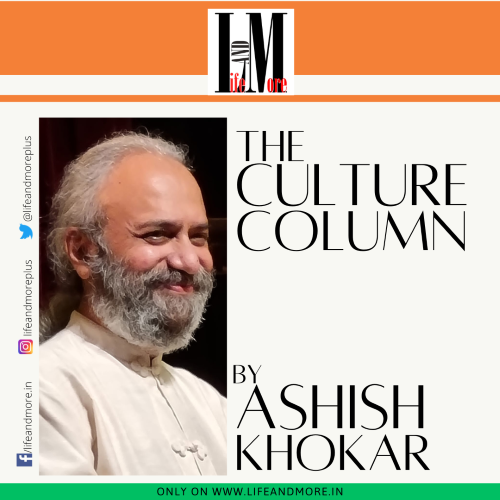
What better time than today to recount this immortal poem by poet Iqbal …Saare Jahan Se Achcha Hindustan Hamara.
Hindustan is a concept; Hinduism, a philosophy. India is an amalgamation of many states, regions, kingdoms put together that held by a common belief. After the Indus age, the pre and post-Vedic ages (see chart for time line), it was 16 mahajanopadas – principalities: Anga, Magadha, Kasi, Kosala, Vaji, Mala Chedi, Vatsa, Kuru Panchala Matseya, Sursena, Asmake, Avanti, Gandharva Khamboja. Then came bigger amalgamations of republics like Lichchawis and Mallas. Then the dynasties, Mauryas, Guptas, Pallavas, Chalukyas, Cheras, Pandians, Cholas (I’m jumping chronologically and centuries). Then the first invaders from Central Persia, the Ghaznis, Ghoris. Then the assorted rulers from Slave Dynasty (yes all them Iiltumush and Allaudin Khiljis were slaves in their own countries, the Assariyins and assorted murderers from Central Asia) before the Sayyids, Lodhis and others took over. Then the Mughals started rule after the decline of Marathas and other regional satraps. Finally, the last Mughal emperor Bahadur Shah Zafar suffered and surrendered to the cunning British rulers, who originally came to trade. A thousand years, India was not India. Bharat had vanished. Above is a sketchy outline of history.
When the spirit of nationalism rose under Gandhi, Patel, Nehru, Azad and others then only Indians or Bharatiyas decided to fight the Colonial rulers. And fight the non-violent way, again teaching the world that India was truly a civilization not some rag tag coalition or dictatorship. In that period, many poets, artistes, thinkers and social activists took part in nation-building. Today, in 2024, the remnants of this nation-building and sentiment continues with artistes like senior Odissi and Chhau dancer-guru Ranjana Gauhar, whose Utsav Society has been celebrating August 15 Independence Day with a popular dance festival at the HABITAT Centre called Saare Jahan Se Achha…
This is almost the 20th year of the festival and 40 years of Utsav as a forum. Offered this year were group work in Odissi from Ranjana Gauhar’s own stable of able students topped by Kevin Vinod Bachchan and Vrinda Chadha. Swati Sharma stood out in group renditions. Varallika as littlest fish and Noor with Paulomi added sheen. Music of Saroj Mohanty was patchy, without balance and in places the flute even besura. The lure and lore of Radha Krishna and gopis engulfed and Matsya avtaar stood out for its cameos. Using a traditional form like Odissi, which is very set, for balletic works is not easy and Ranjana Gauhar showed acumen in that. Her group is wholesome and different shades of tayari is evident but all hang well together from the youngest to the more grown-ups. Kevin dances like a man, without effiminate mannerisms or namby-pamby-ness. His lips are sealed, showing control of breath. No huffing-puffing there. Shows stamina too. He has to guard against putting on weight as he is also a freshly-minted SNA Yuva awardee, so in news and gets lots of shows and is central to his guru’s productions. It goes to guru Ranjana Gauhar’s credit to have continued 40+ years in dance with dedication and commitment to Odissi and Chhau. The lone Chhau boy did well.
Utsav honours veteran Guru Aloka Panikar
Utsav also honoured veteran Odissi Guru Aloka Panikar,82, along with Kathak guru Geetanjali Lal, costume jewellery and textile designer Asha Kamal Modi and Bombay Nalanda principal, Dr. Uma Rele. In honouring them, she honoured herself too.
The delight of the two-day festival was to see a different flavour of Bharatanatyam of Serfoji-Thanjavur Bani, as learnt by Dr Sandhya Purecha via her guru Parvati Kumar and bringing in the Maratha linkages through Abhang where varkaris go in processional stance and dance (bit like Karagam-Kavadi of Tamilnadu). Beginning with Om Shambho… she wove in the sapta tandava (Ananda, Sandhya, Gowri, Tripura….) and the dancers maintained individuality while working well in unison. Each had a personality of own and yet blended well with group dynamics. The credit goes as much to them and more to their guru. It was a happy group that danced with aplomb. Some of the typical gaits and flourishes of this baani were seen in Delhi for the first time.
Dr Sandhya Purecha group
Guru Shyam Singh next with Manipuri offering was predictable fare and acquitted well and the Kathak in end by Sangita Chatterjee was tame. Delhi Kathak is beginning to look a case of cloning; all look the same. No individuality. Saare jahan se acha leaves one with patriotic and emotional connect with Partition of India (those of us North or East Indians who have suffered it directly) and coming of Independence too. My father’s family suffered – displaced overnight. We were among the luckier ones as grandfather was commissioner of Quetta defence and then Lahore and just a year before Partition, a Sufi peer told grandfather to accept a demotion and take a new posting to a faraway village called Meerut. Where was the Capital Lahore and where a dusty Meerut, but he took it. The house 53, Model Town the family left in Lahore gave sharan or refuge to 50 people on whom a scratch didn’t happen in the bloodbath of Partition because this peer Chamanlal Shah had blessed the house. It still stands, 78 years after Partition.
Lahore was the cultural capital of North India. Delhi was a village in 1940s. In lieu of that house in Lahore, left due to the Partition, we were given a plot in Chandigarh. Father was emotionally destroyed by the earthquake in Quetta 1935 and then the Partition of India in 1947, he never bought or possessed a house anywhere in India. He felt displaced and dance centred him. It was as transient as life, he felt. It was for the moment but ephemeral. He sold the Chandigarh house to maintain India’s biggest dance collection, now gifted to the nation @ IGNCA. Artistes often ask government for grants, awards and more but this family has given everything to the nation. Estimated at a minimum of six crores by an expert government committee, this prestigious dance treasure – the ‘Mohan Khokar Dance Collection’ – is a donation to the nation. Will the nation honour the man and his memory in his CENTENARY year?
From Meerut, the Khokar family came to Madras, then Baroda, Delhi and now Bangalore! In between stints in Paris, New York, Stockholm and Italy. Truly, a global Indian family. We speak seven languages. But the best language is one of love! One can win hearts just by being …aisi baani boliye….auro ko bhi sheetal kare ….kabira…
Partition of India is now also a good documentary film made under the overall guidance of Dr Sachchidanand Joshi, with voice of Kabir Bedi, and while the project is three-years-old, it was apt that Doordarshan telecast it on the eve of Independence. Well-crafted with a feel of a Fellini film, the montages and footage in black and white bring in the period of pain, displacement and immense suffering. South India didn’t suffer much so it has remained insular and continued dancing and singing and building temples even abroad or the spice trade kept the West and East coast busy. Dance and music connected all. Literature and poetry too.
Busy without work! That’s a new malaise for some and busy on social media is also considered work now. Youngsters are so instantly driven that they are not doing real work but putting reels to show they maha busy. It’s a phase and like all good things must end someday.
The day is not far when AI writes this and the readers also don’t read but store in memory! Memories of Bharat Mata and all productions done in patriotic fervour come to mind: Shanti and Gul Bardhan’s Discovery of India. Uday Shankar’s Labour and Machinery. Sachin Shankar’s Naa. Yog Sunder’s Azadi. The work of IPTA, the work of so many films in the fifties and sixties. Painters, scenographers, craftsmen and more. They all go to prove: Saare jahan se achcha Hindustan hamara! Vande Mataram.
Ashish Khokar uses humour to make serious points on our culture and society. A historian by training, artiste by disposition and organiser by nature ,in his spare time he has also published /authored 50 books; over 5000 articles in mainstream media in the last 45 years and served many cultural institutions in India and abroad, making him a renaissance man. He is also a pioneer in arts administration and international culture education since the 1980s. He is hailed as the gold standard of archiving, documentation and dance history. For full bio : www.attendance-india.com


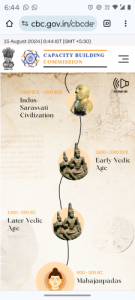
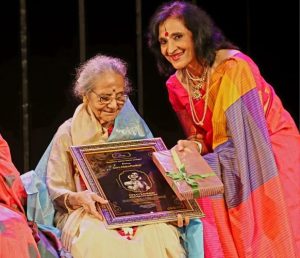
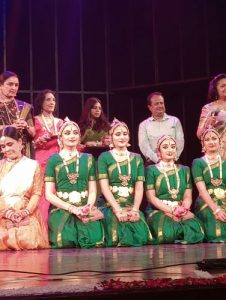
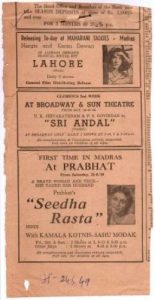
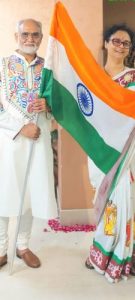
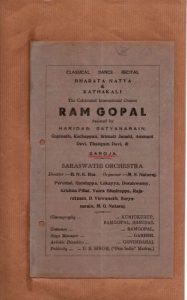
1 Comment
Thank you bhai for sharing such an excellent article. I am blessed & I am sure that all those who read the article published by you will be blessed to get to know so….much in detail about the culture & society. I have to say that you are ‘All in all Raja’. You make India truly shine with giving so….much information about the artistes & the society. 👏🙏